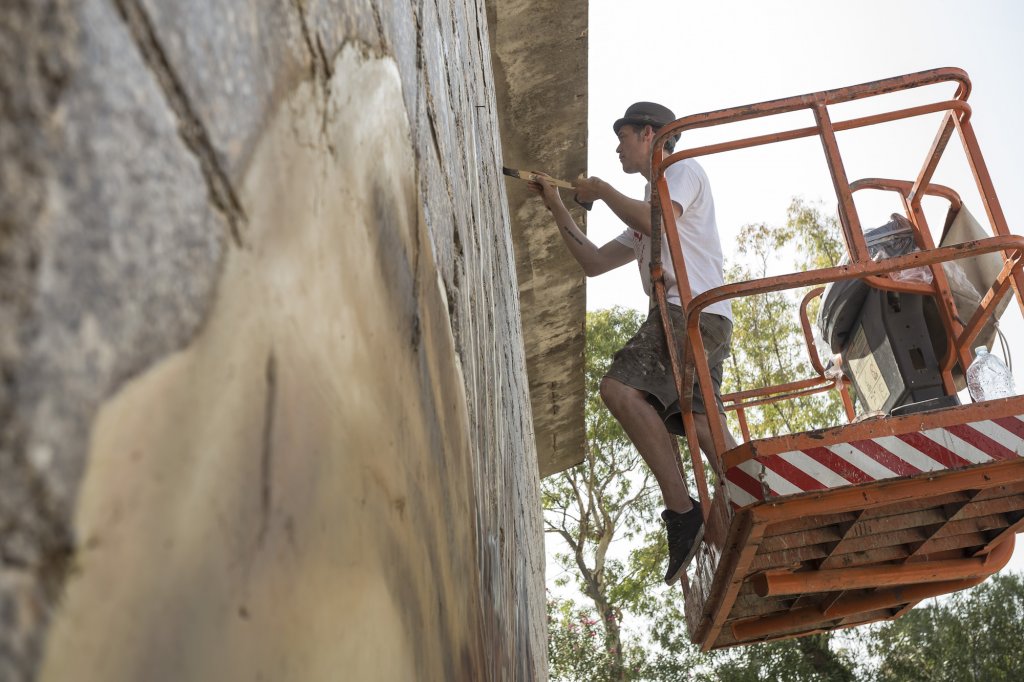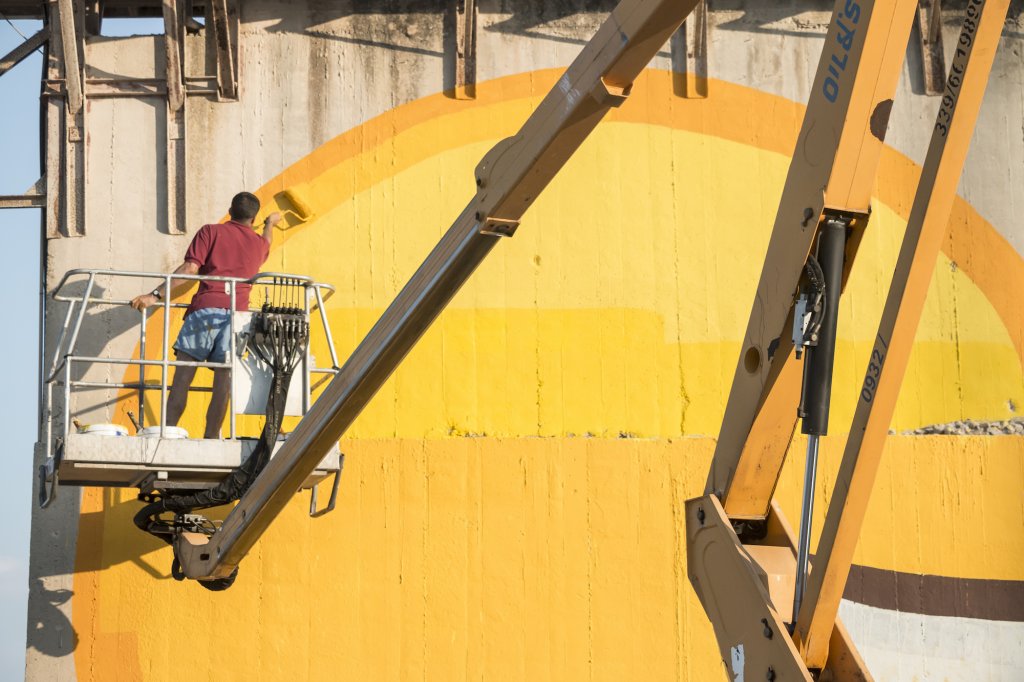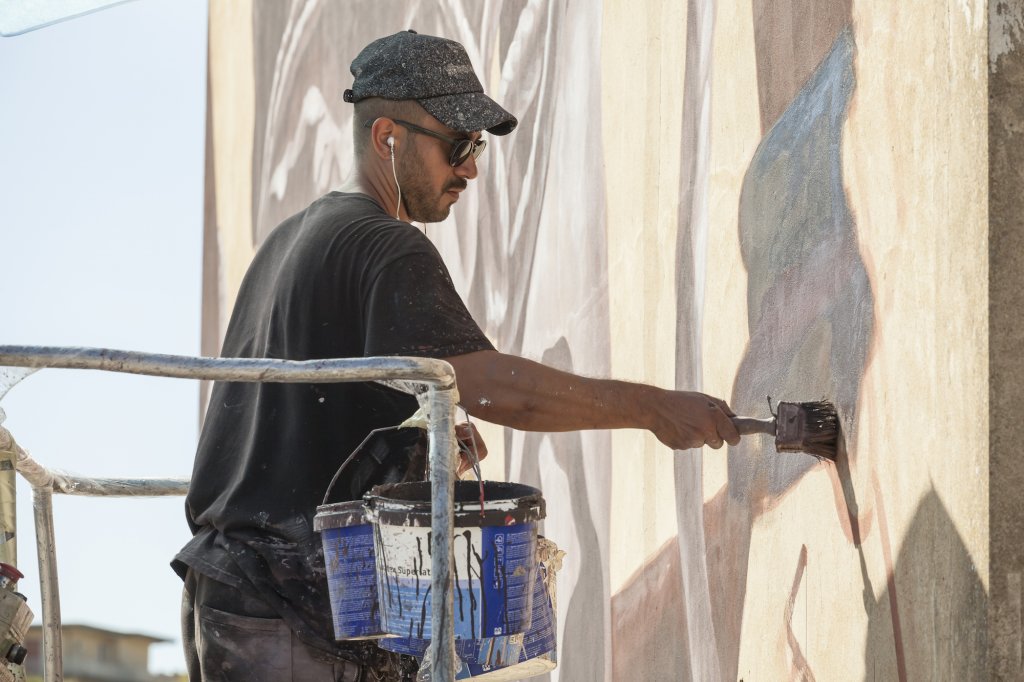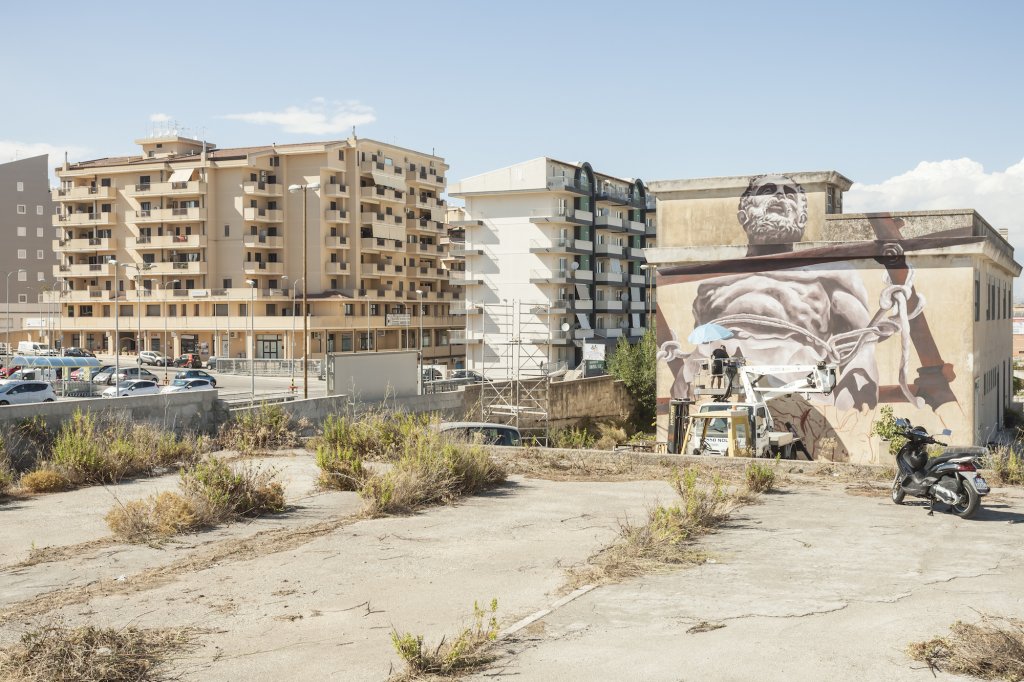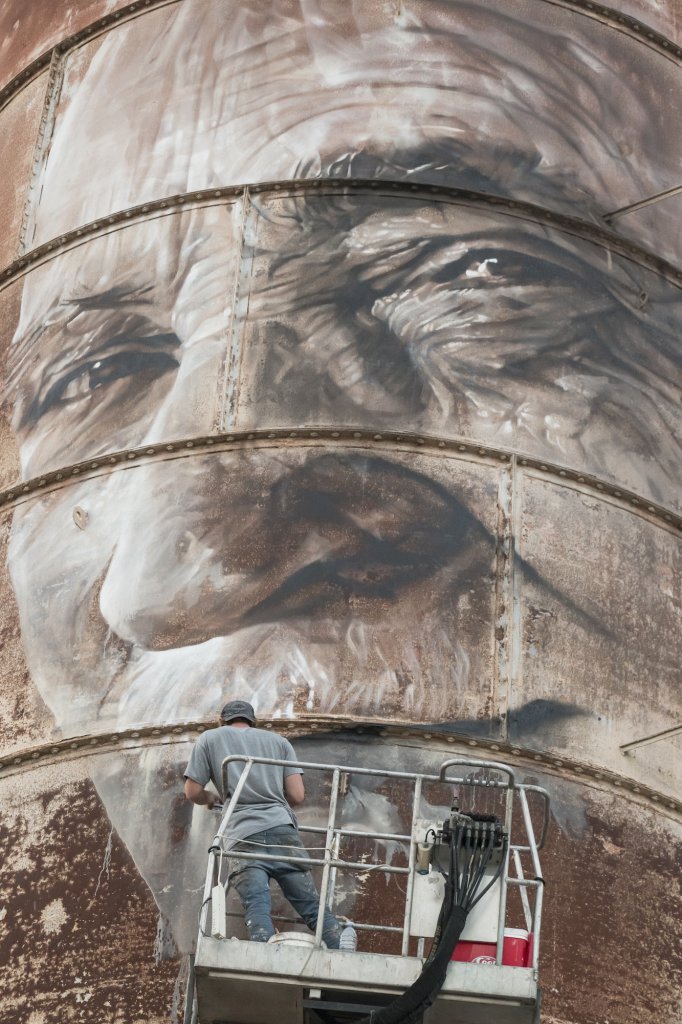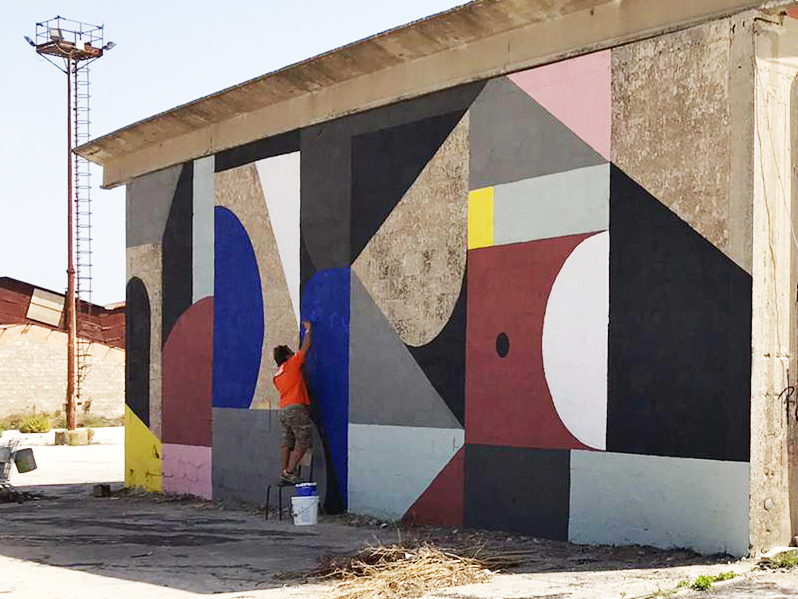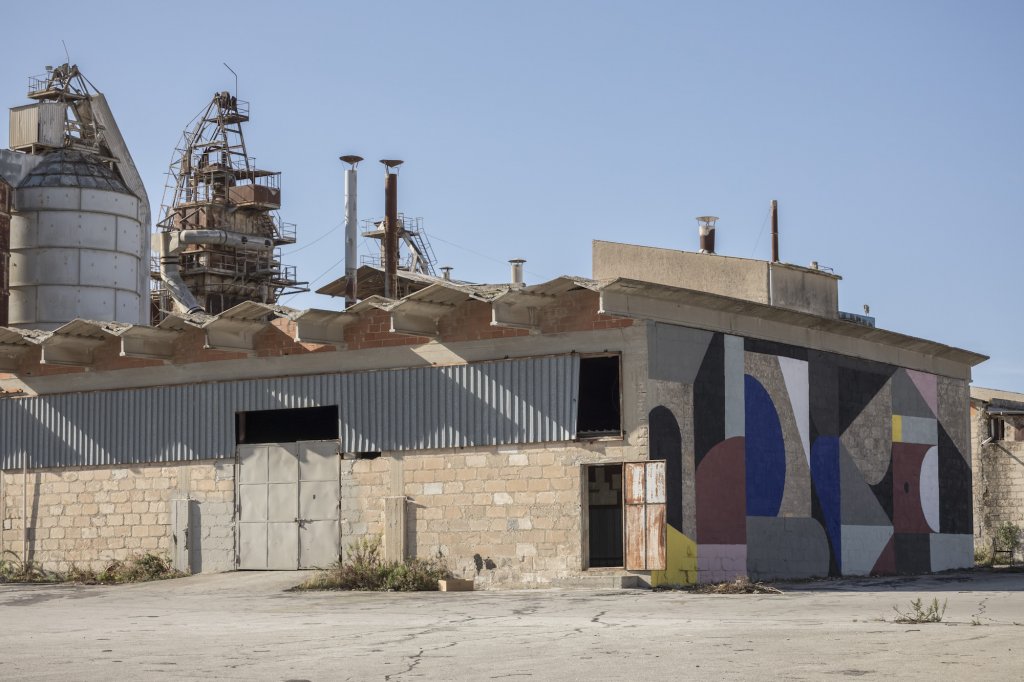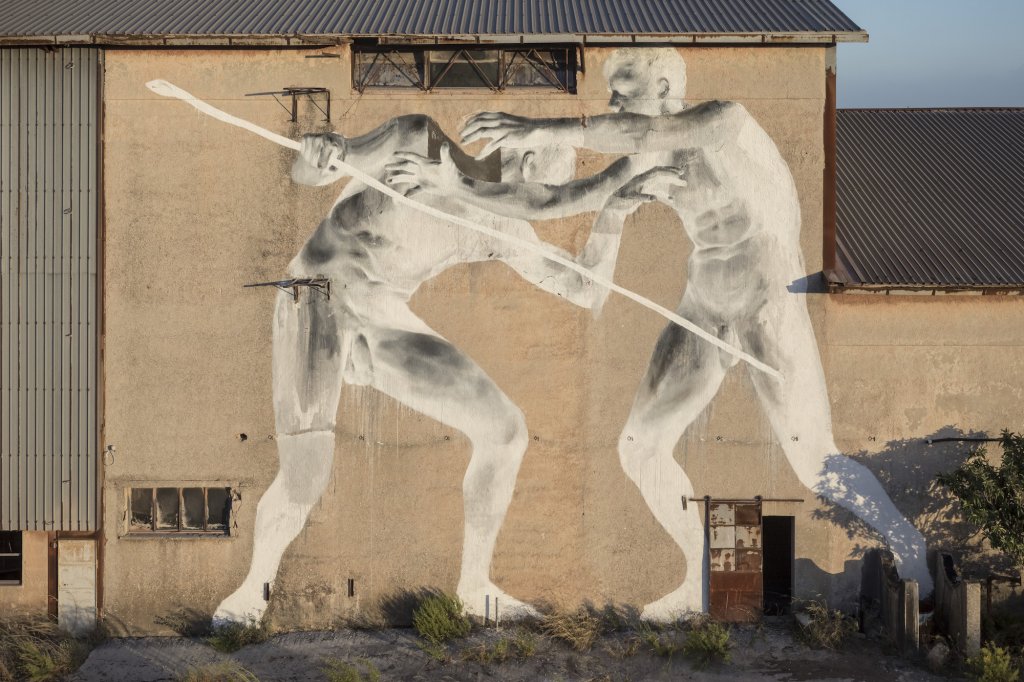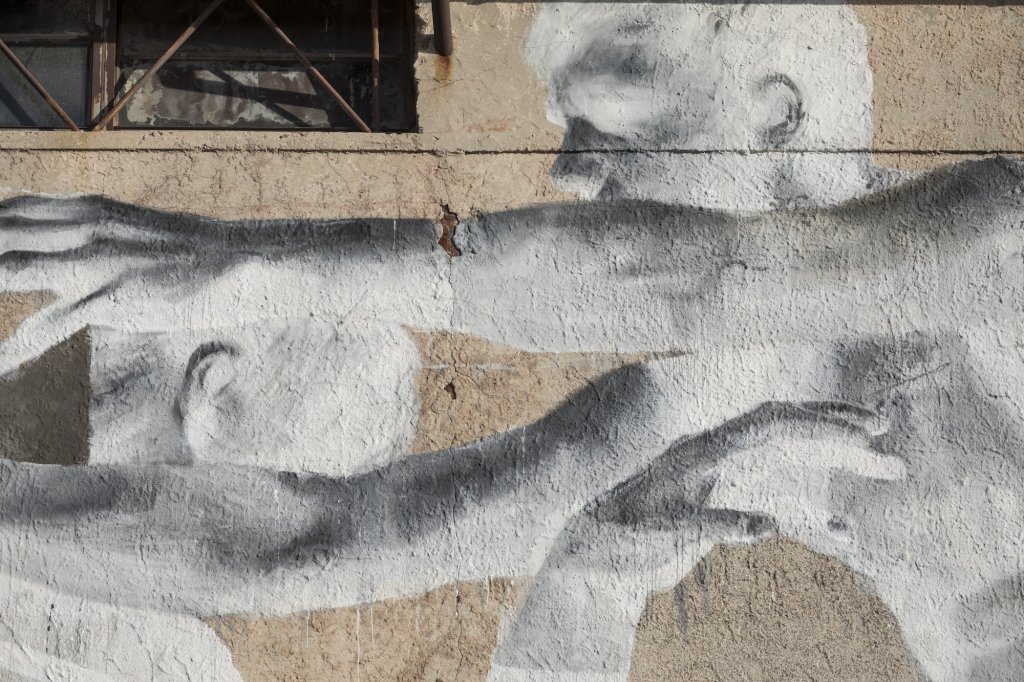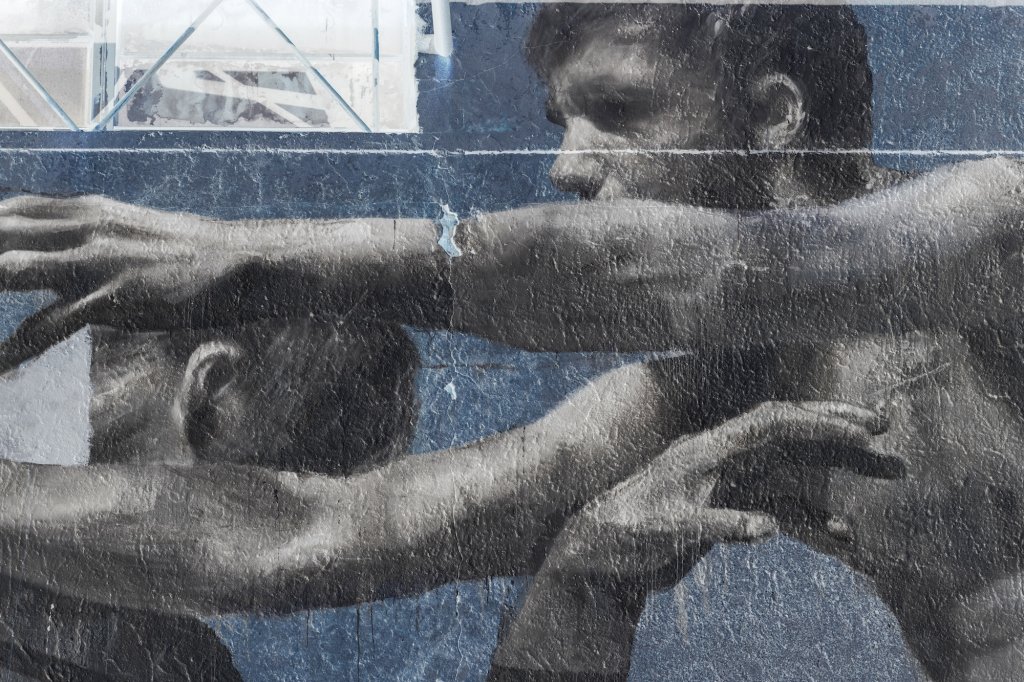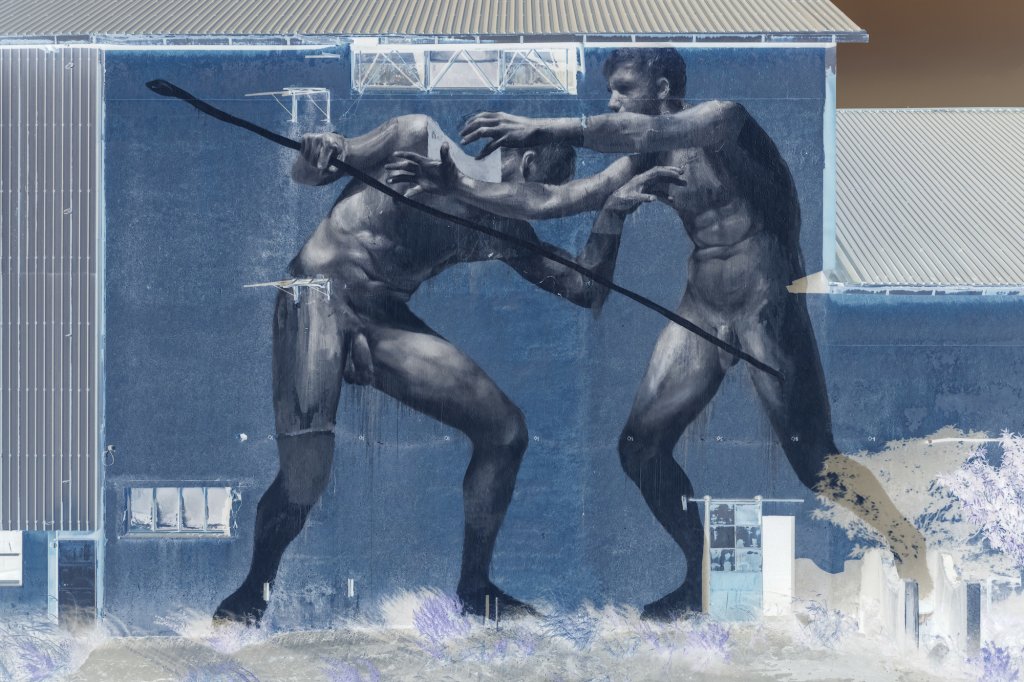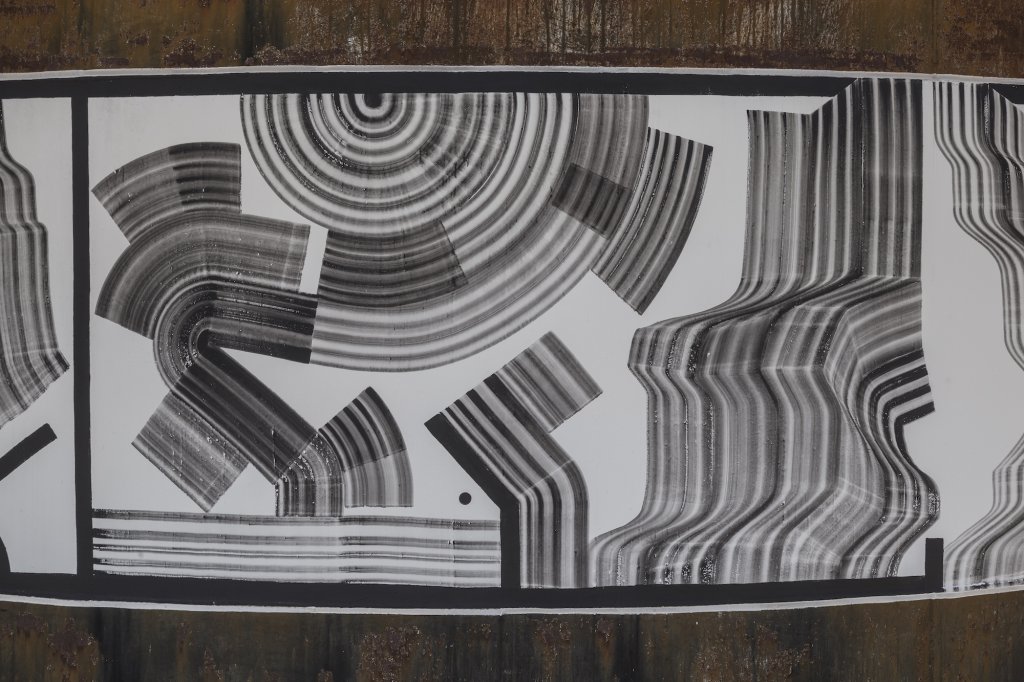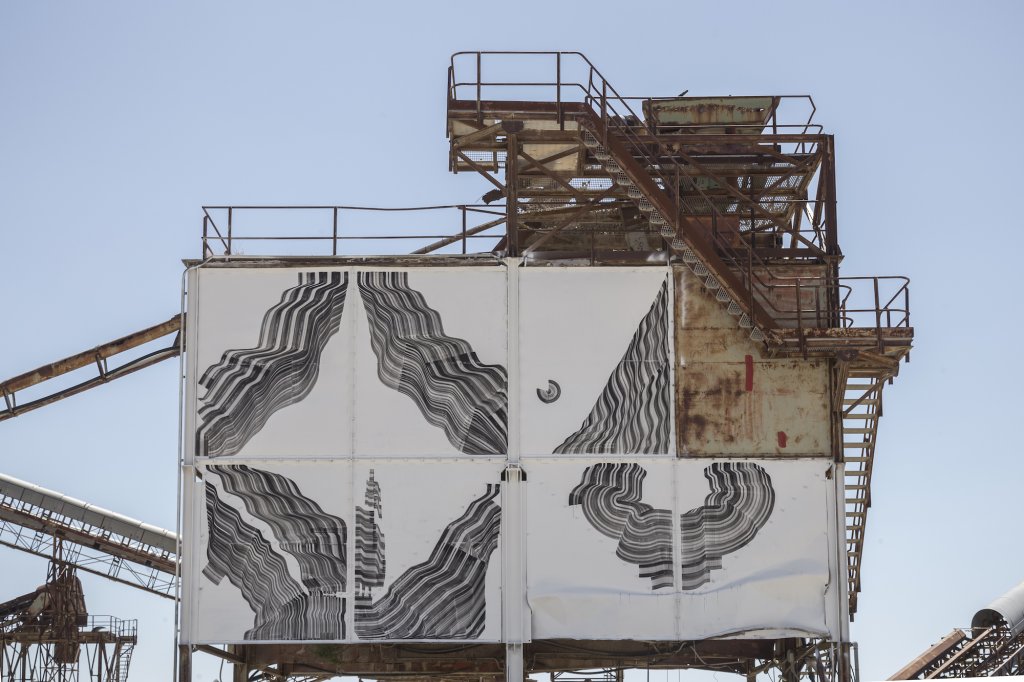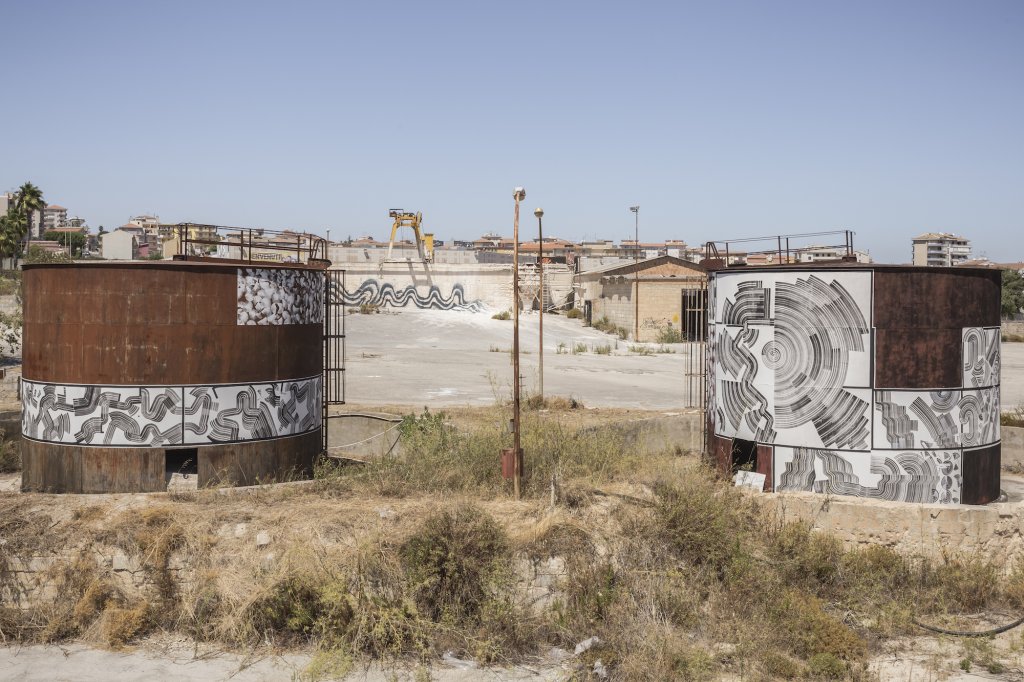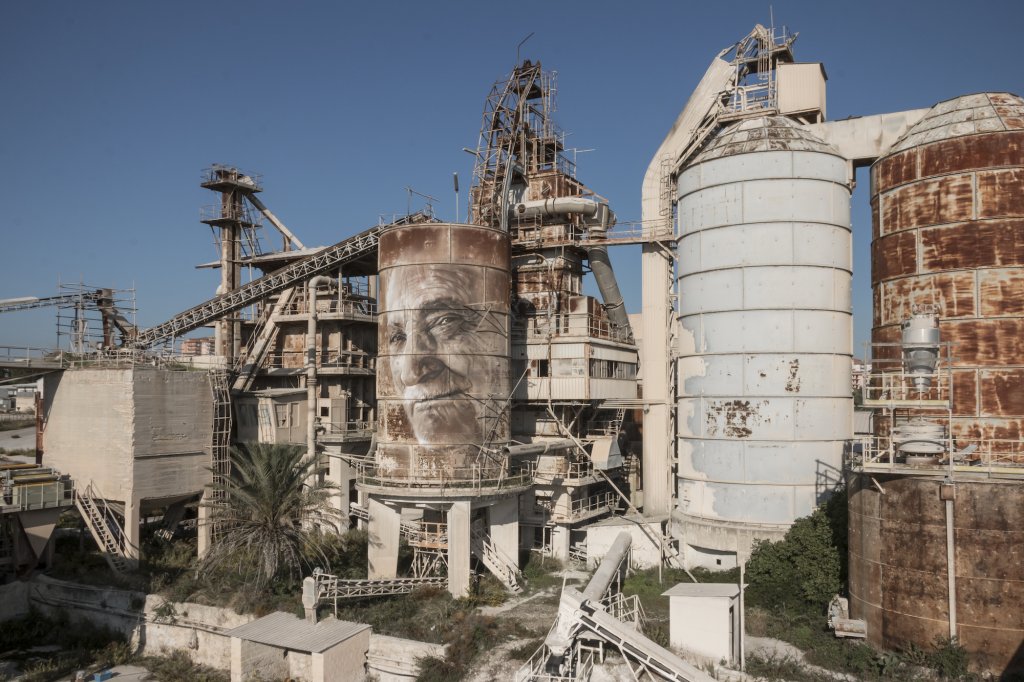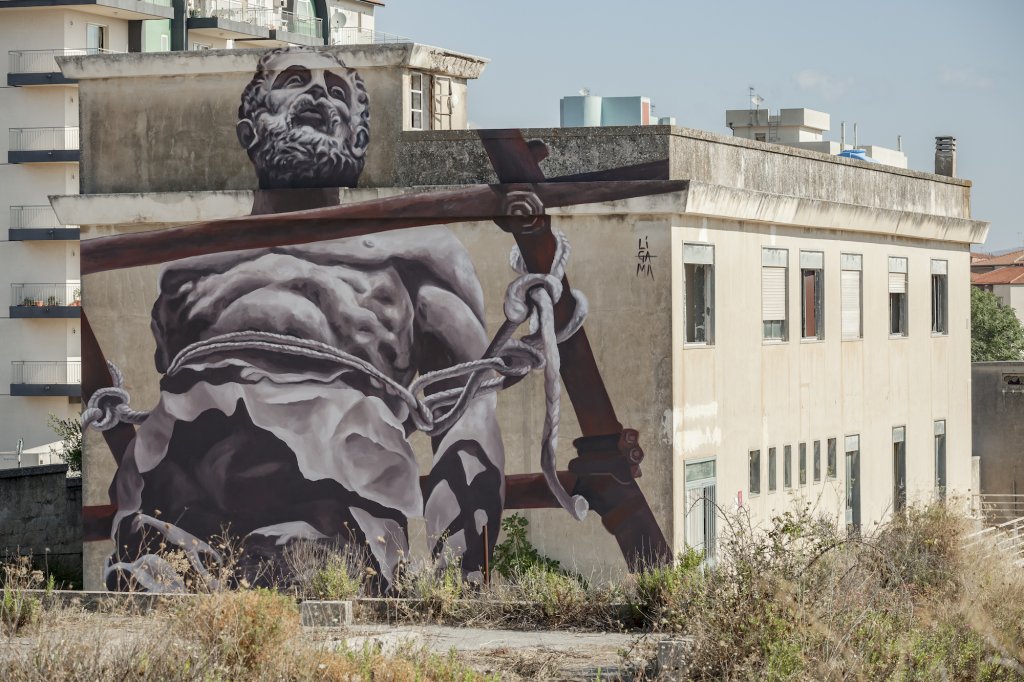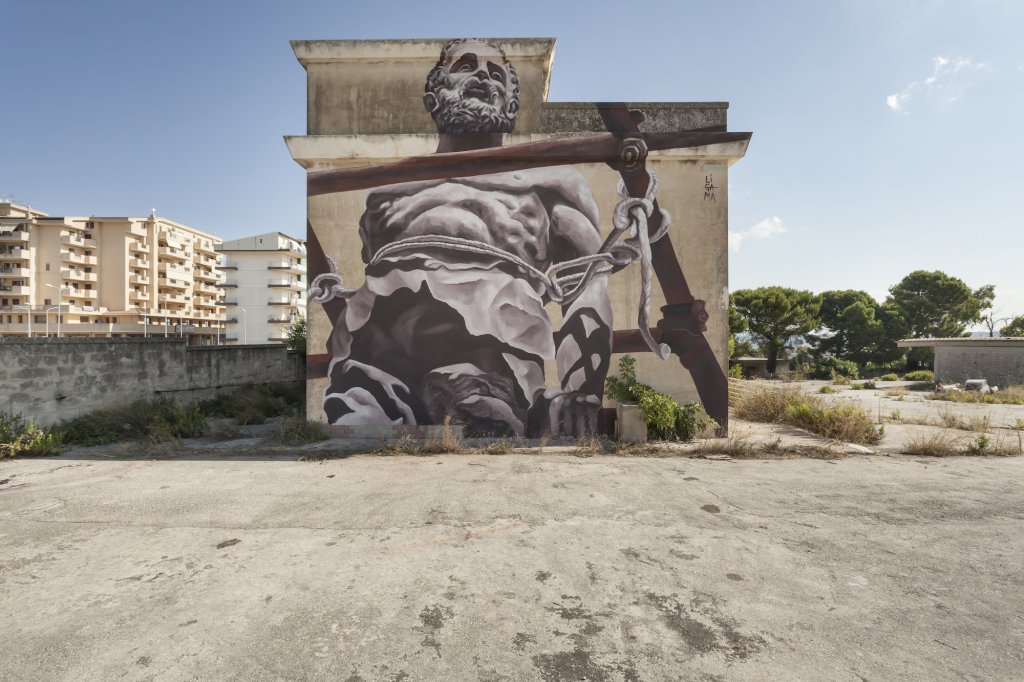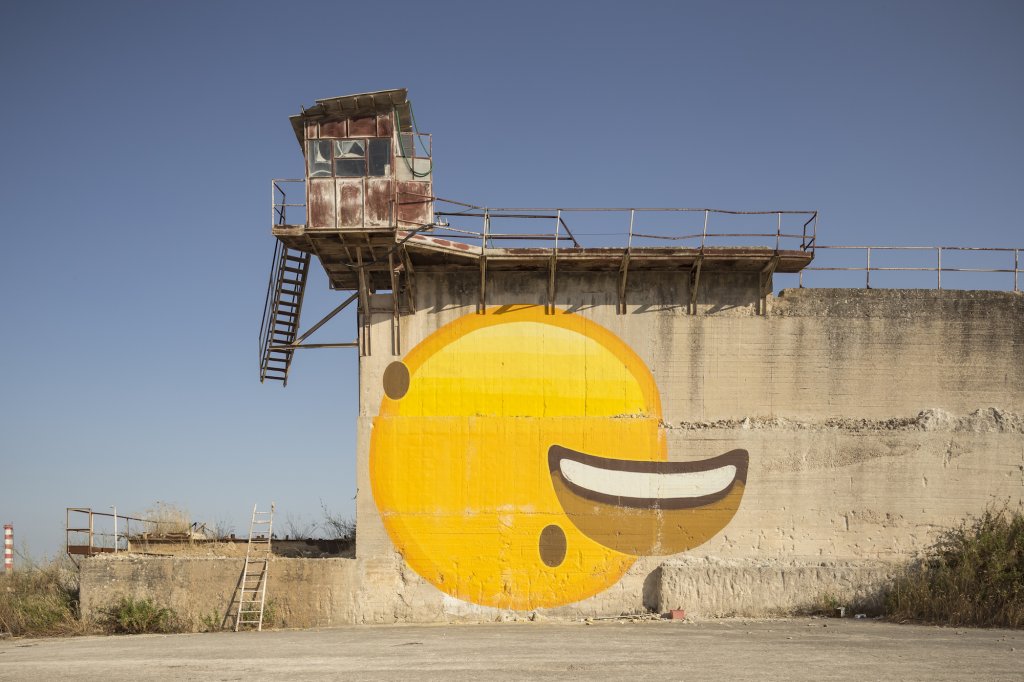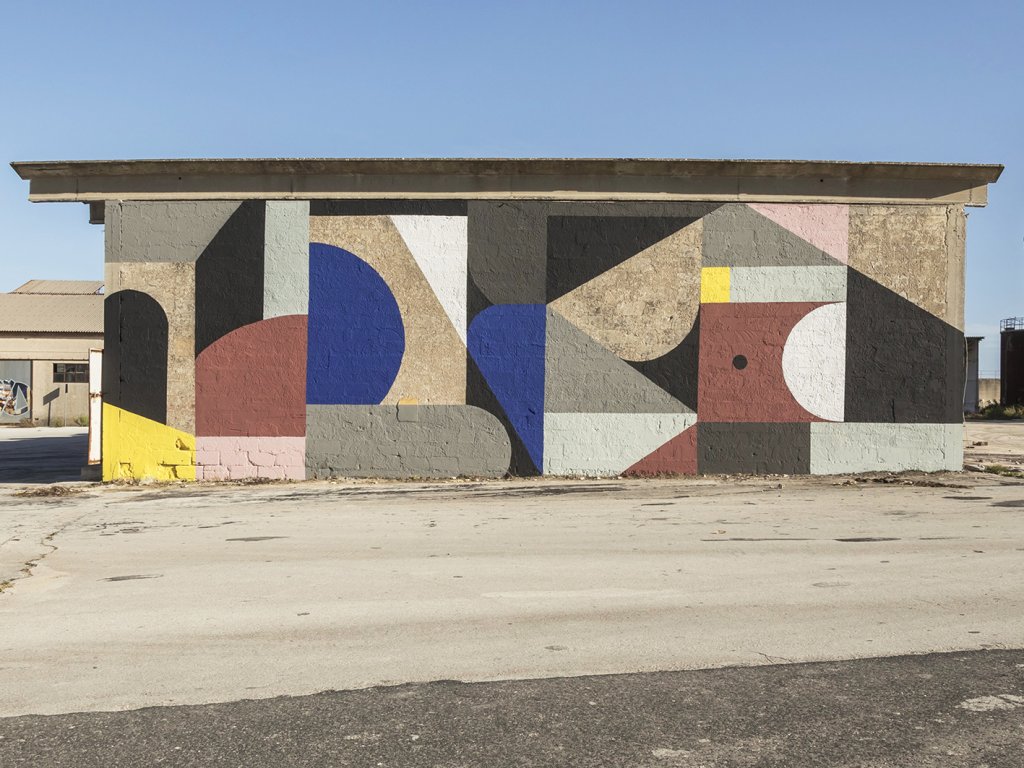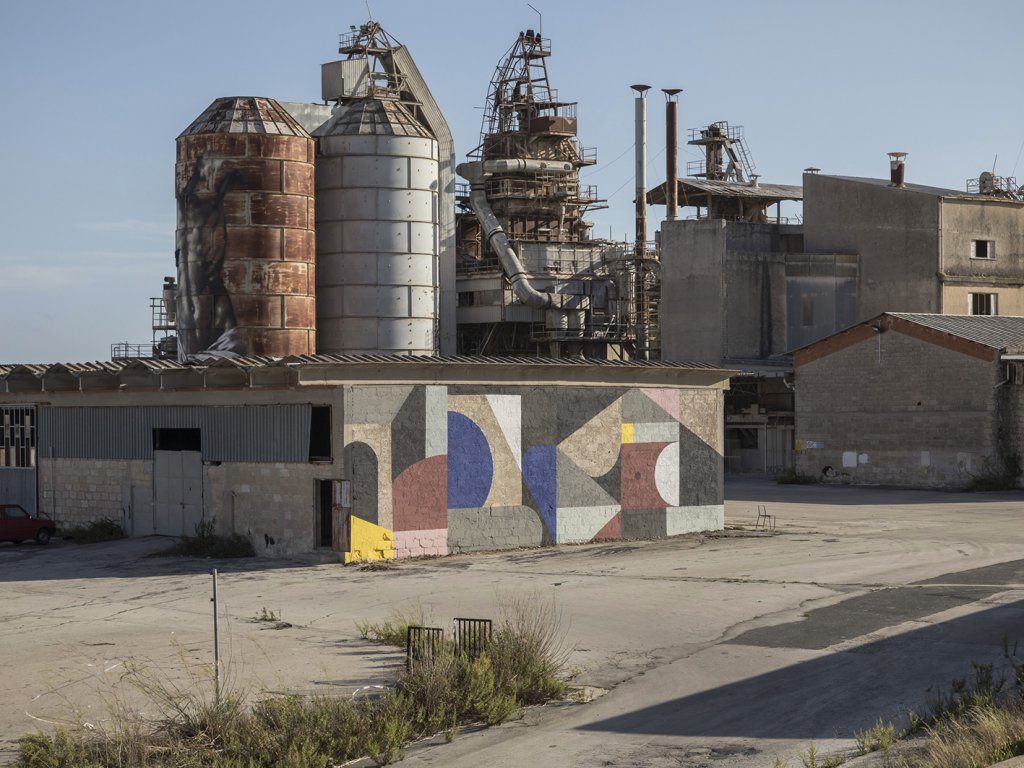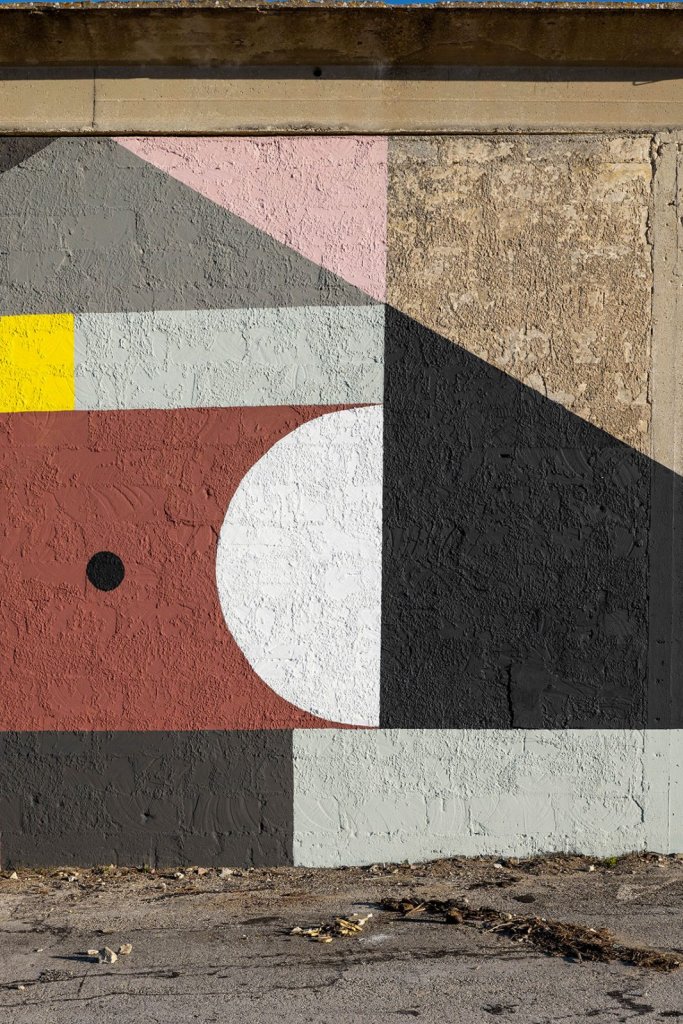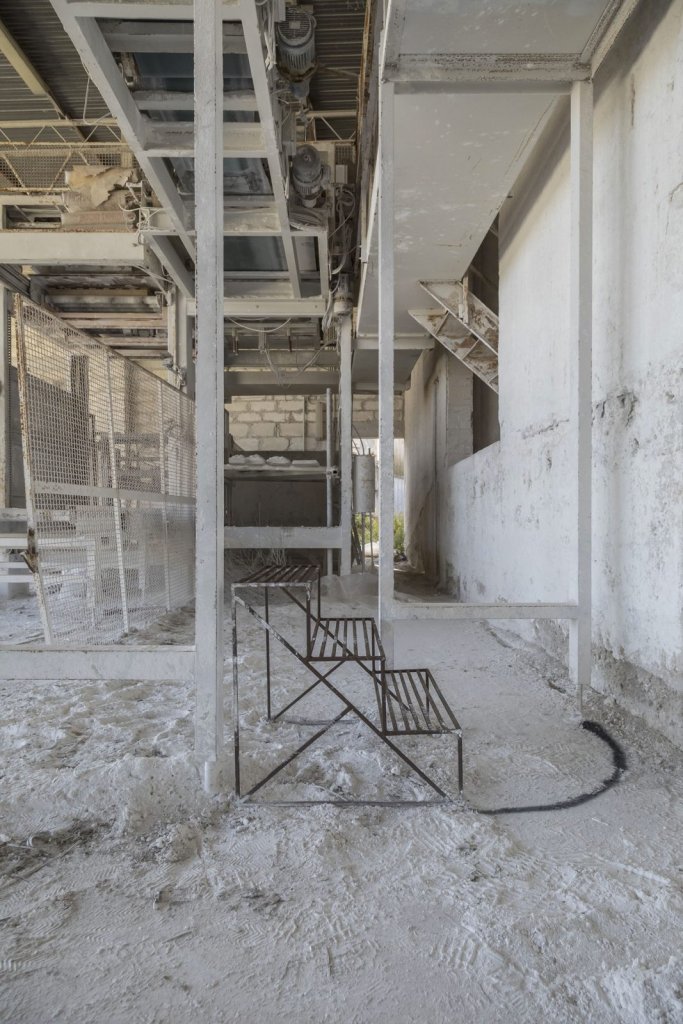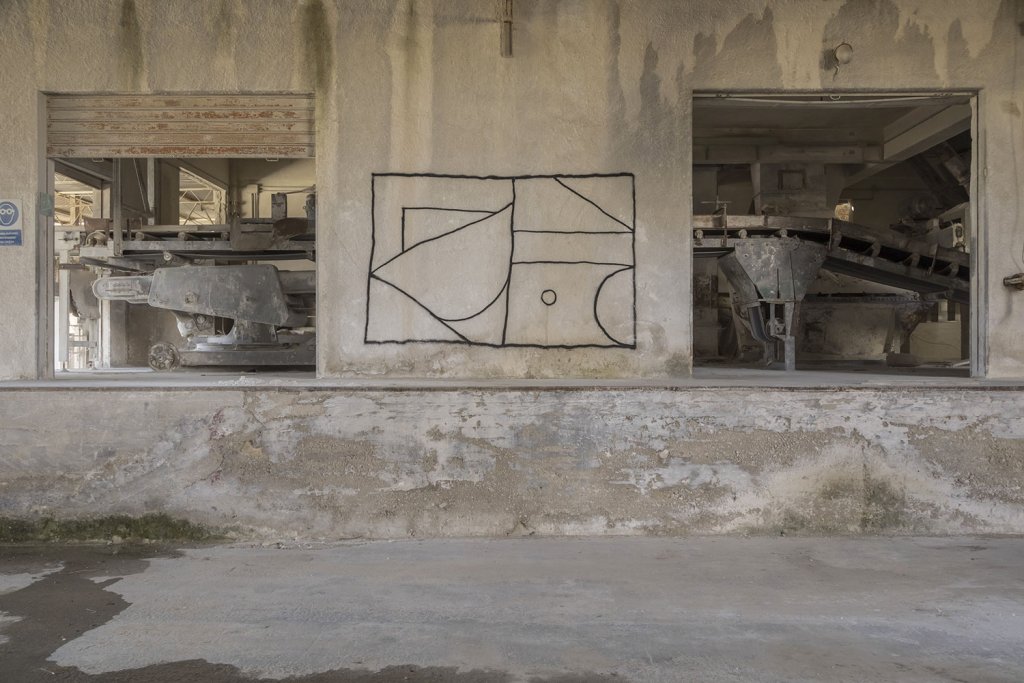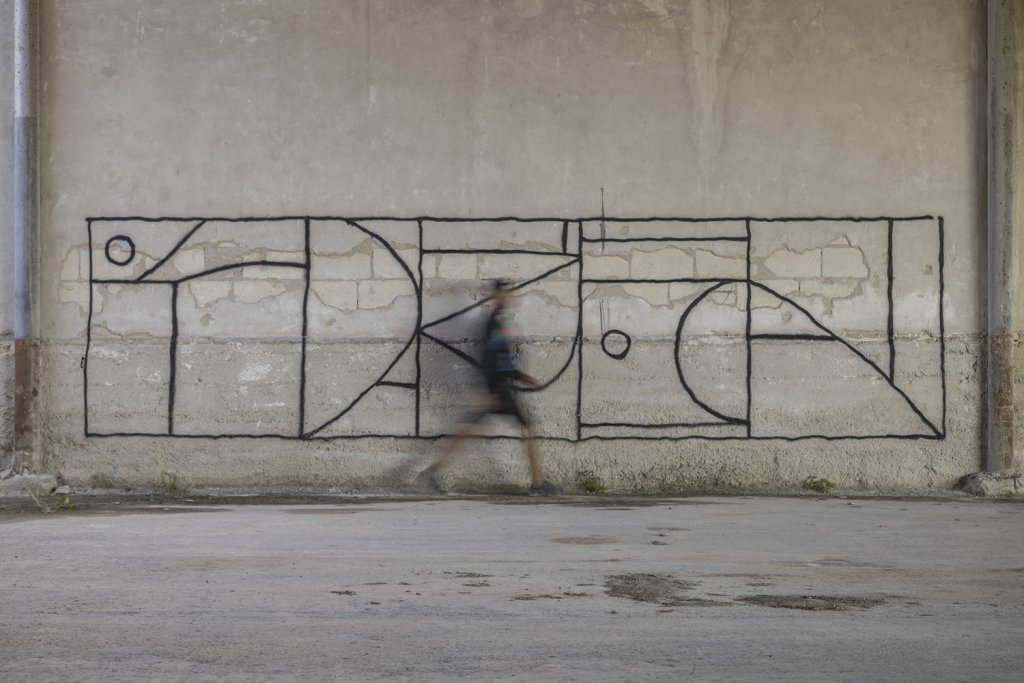Bitume – Industrial Platform of Arts project, Ragusa 2020
The Antonino Ancione company in Ragusa has been a productive heart of Sicily and now since its closure in 2013 stories and memories are once again being created with the Bitumen project ‘Industrial Archaeology’.
Here’s a little history of the Antonino Ancione company …
Limmer, Val de Travers, H&B Aveline, Compagnie national per l’esplotation des asphalte are just some of the companies that back in the 19th century were allowed by Sicilian region to dug and extract – in quarries or tunnels – bitumen from Ragusa subsoil, and then exporting such precious natural asphalt all over the world. Whilst the Roman company ABCD (Asfalti, Bitumi, Catrami e Derivati) eventually stole the limelight in Tabuna quarries throughout the first half of the 20th century, since 1948 the leading role has been taken by Antonino Ancione Srl that has become one of the most important company for the production of bituminous products in the whole region. The industry, which over the years has created hundreds of jobs, now reopens its doors to the artists involved in the Bitume – Industrial Platform of Arts project.
It is now possible to observe over thirty works created by the artists involved in the site-specific project born in the furrow of FestiWall, the International Festival of Public Art which reached its fifth and final edition last year.
“Bitumen is above all an experience, It is an exploration, an incursion into a material that has shaped the development of an entire society, it is a reinterpretation of what has been removed, listening to an individual and collective story. The production cycle of the Ancione company leverages the aesthetic act, which reconfigures the industrial system as a new environment for the creative gesture.” Vincenzo Cascone, artistic director of the project
Artists invited were Ampparito, Luca Barcellona, Bosoletti, Ciredz, Demetrio Di Grado, Franco Fasoli, Alex Fakso, Gomez, Greg Jager, Alexey Luka, Ligama, Case Ma’Claim, Martina Merlini, M-City, Moneyless, Ban Pesk, Rabit, Giovanni Robustelli, SatOne, Guido van Helten, Sebas Velasco, Simek, SNK-LAB, Sten & Lex, Dimitris Taxis, Tellas and 2501.
Greg Jager’s mural ‘Dismantle’ reflects on the industrial cycle and the geometries which draw the production area around Contrada Tabuna.
Paying homage to futurism and the Bauhaus school, the artist expalns…
“The wall painting I created inside Ancione factory is part of a wider research project called “Dismantle”.The concepts of dismantling, deconstructing, stripping are present in all my practice and it is just with this spirit that I carefully observed the majestic industrial archaeological site of Bitumen project for a whole day. The artwork takes inspiration from a ceramic painting found outside the administrative offices which represented the production cycle inside the industrial site. In my work, such intertwining of lines and curves is broken down and reassembled through multiple geometries and the use of a palette based on an in-depth study on the dominant colours carried out on the spot. A series of diagonal lines are inspired by the conveyor belts dominating the whole area.” Greg Jager
Francisco Bosoletti mural ‘Polemos’ approaches Bitume industrial area by exploring themes such as contrast, double, Myth.
Two mirror figures compete for space: the only struggle can join them. The reverse image amplifies the sense of mystery and is based on the story …
A child receives some toys as a gift from the Titans. Among the toys, there is a mirror. The child (Dionysus, the twice-born), partaker of the divine and human nature, looks in the mirror and sees the world. His glances and his thoughts tear down the veil of shadows. Then, the conflict reveals itself: the mirror reflects the constant struggle of the becoming, light and shadow, life and death, water and fire. He is Polemos, the father of all things, the king of everything; the one who makes some men free, and others slaves. The child learns from a slight glimmer of light that the shadow lies both before his eyes and inside himself. Fire gushes from the depths of the earth and from his own heart. It is black as pitch; it blinds eyes and senses. While he’s gazing at the reflected images, the Titans take advantage of that melancholy astonishment to tear him apart. Only the heart withstands, resting to the change. Thus, every day a new sun rises…sets and hides. Another fire comes, however, from the sky; it never goes out, it never disappears behind the horizon, it rules all things….resting its bright gaze on the child and his divine toys.
2501 “ANCIONE (Negative and Positive Space)” explores the former Ancione factory with the intention of mapping its surface through the power of the pictorial gesture. Two communicating cylindrical silos lend themselves to being reinterpreted in a sort of empty/full game, which becomes a reflection on the processes of urban transformation and dismisses industrial areas.
“The satellite view of the factory with its load-bearing elements, as if it were a buffer between the urban and agricultural worlds, has inspired my artwork on the silos. The mapping, the connections, the play of communicating vessels, the circular brushstroke guiding a whole new sign, want to investigate – within different frames – the possible trajectories to be taken in the perceptive space of industrial archeology.” 2501
Guido van Helten – “Meno Leffa”. Carmelo Bentivoglio, aka Meno Leffa, has worked for 38 years as a carpenter for the Ancione family, owner of the historic asphalt and brick factory located at the entrance to Ragusa. The artwork wants to pay tribute to all those workers, whose sacrifice has helped to build the modern concept of the city.
Ligama’s mural “Pece e Gloria” pays tribute to the Hyblaean mineworkers (in Sicilian dialect “Picialuori”). The creative Sicilian artist draws inspiration from a common tomb – hosting 40 burials – placed in the cemetery of Ragusa. In the centre of the tomb, a pitchstone column holds a statue of a proud, strong miner holding a pickaxe and an anvil.
As Ligama himself explains in his introduction to his mural…
“Over a hundred years have passed, and only a few pieces of that statue still remain today, as they were hardly clinging to the passing of time; the hero is tied to a cage of innocent pipes as if he were a prisoner; some of his pieces can be taken away, as the foot. Time has not, however, broken the pride of that body; it has not affected the strength to look at the sky, aware of being the custodian of the memory of all those deceased piciaruoli.
I learned this story by Gianni, who told me:”My maternal grandfather, born in 1904, had worked in the mine for thirty years, until the 1950s, when he “gave way” to my father, born in 1936. My paternal grandfather, who died of lung cancer in 1969, was a carter employed to transport pitchstone and limestone from the respective mines. On May 2, 1962, my father, together with four other miners, died after being BURIED ALIVE while they were mining in the Tabuna/Rinazzi district. I was born a few months later, inheriting my grandfather’s name, but that’s another story”.
‘Pece e Gloria’ is dedicated to miners’ work, to their memory and to all the “common” heroes who carelessly die every day.” Ligama
Ampparito returns to Ragusa to investigate, within Bitume project, the relationship between inanimate/unexperienced objects and animated/inhabited ones. His mural is titled “Unstructured smile”.
“Most of the people love ruins, I think because they are witnesses of bygone days, kind of a time machine, a way to live in the same scenography than a bunch of years ago imagining how was the life. There is also some kind of voyeurism, a feeling of checking something forbidden, a window to see through secretly.
Basically, I got shocked when I got into the factory, a massive area full of industrial constructions, machines, cars, documents, personal belongings, etc. it was like going to Chernobyl, everything was like if people ran away and never came back. I was several days walking around thinking on the amount of dreams, efforts, energy, people, knowledge, assets and capital involved in this place. Now remains the structure without life, a stuffed body.
This piece produces an extreme contrast in this place, all the context has aged together, and this bright yellow modern symbol comes up like an alien. I like it because it is an inanimate structure, something that smiles but doesn’t have any expression; it would need life to do so. I think is like the factory, I huge witness of good times getting rust without the possibility of express anything because there is no life, we can only dismantle the smiling piece by piece, hoping to set them in a new context, with people, animating it, giving it life again.” Ampparito
Artist Greg Jager produced “Dismantle” a series of art interventions.
“I produced “Dismantle” a series of interventions that merge with the impressive industrial archeology of Ragusa and raise questions on the anthropization and the obsolescence of the industrial cycles that characterized the human footprint in the industrial age. I worked to trace the fullness and emptiness, decontextualizing the architecture, effectively “dismantling” the structure to leave open keys to the past and infinite interpretations of possible futures.
The first work I produced is 5 meters high by 15 meters wall painting that gives its name to the entire project: a vision of the same industrial architecture that is broken down and reassembled through its multiple geometries and a palette born from in-depth study dominant colours ‘in situ’.
A series of diagonals and the play of solids and voids is inspired by the architectural elements present throughout the industrial area and the modification of the surrounding landscape.
Other ephemeral and multidisciplinary interventions took place into inaccessible areas, transforming the space into a device with infinite spatial and visual solutions, with the aim of questioning the limits of architecture and human beings.” Greg Jager
Check out the murals below …
The project has the support of the Ars – Sicilian Regional Assembly, Municipality of Ragusa, Federico II Foundation of Palermo, University of Catania – Faculty of Geology.
